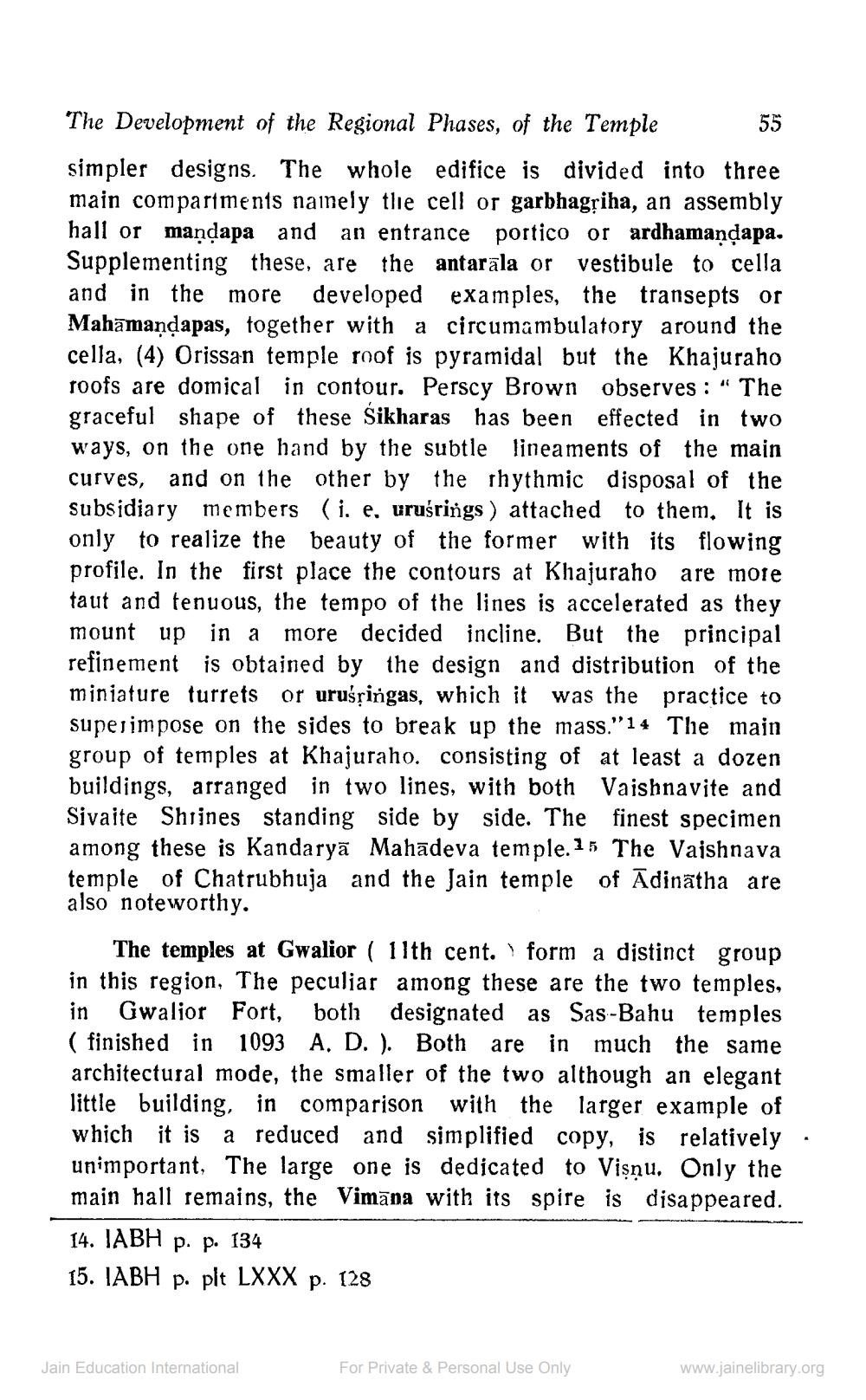________________
55
The Development of the Regional Phases, of the Temple simpler designs. The whole edifice is divided into three main compartments namely the cell or garbhagļiha, an assembly hall or maņdapa and an entrance portico or ardhamandapa. Supplementing these, are the antarāla or vestibule to cella and in the more developed examples, the transepts or Mahāmaņdapas, together with a circumambulatory around the cella, (4) Orissan temple roof is pyramidal but the Khajuraho roofs are domical in contour. Perscy Brown observes : " The graceful shape of these Sikharas has been effected in two ways, on the one hand by the subtle lineaments of the main curves, and on the other by the rhythmic disposal of the subsidiary members (i. e, urušrings ) attached to them. It is only to realize the beauty of the former with its flowing profile. In the first place the contours at Khajuraho are more taut and tenuous, the tempo of the lines is accelerated as they mount up in a more decided incline. But the principal refinement is obtained by the design and distribution of the miniature turrets or uruśșingas, which it was the practice to superimpose on the sides to break up the mass."14 The main group of temples at Khajuraho. consisting of at least a dozen buildings, arranged in two lines, with both Vaishnavite and Sivaite Shuines standing side by side. The finest specimen among these is Kandaryā Mahadeva temple. 15 The Vaishnava temple of Chatrubhuja and the Jain temple of Ādinātha are also noteworthy.
The temples at Gwalior ( 11th cent. form a distinct group in this region, The peculiar among these are the two temples, in Gwalior Fort, both designated as Sas-Bahu temples ( finished in 1093 A. D. ). Both are in much the same architectural mode, the smaller of the two although an elegant little building, in comparison with the larger example of which it is a reduced and simplified copy, is relatively unimportant. The large one is dedicated to Vişnu. Only the main hall remains, the Vimāna with its spire is disappeared. 14. TABH p. p. 134 15. IABH p. plt LXXX p. 128
Jain Education International
For Private & Personal Use Only
www.jainelibrary.org




